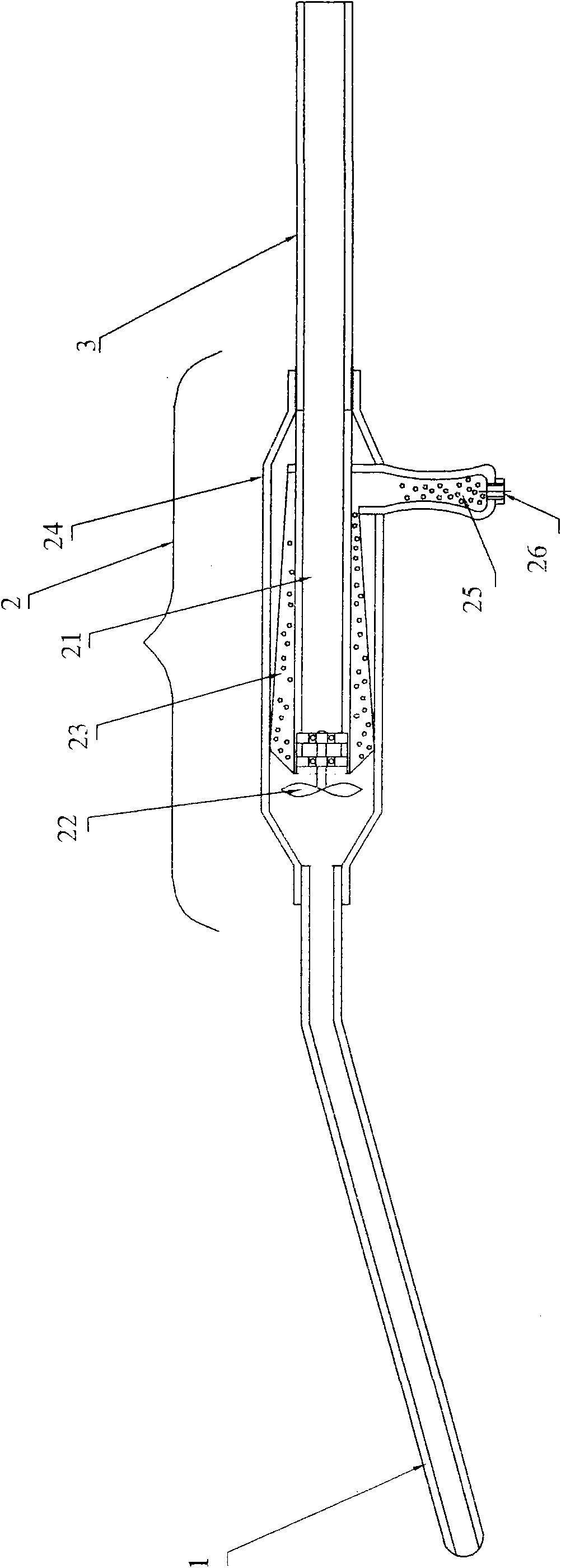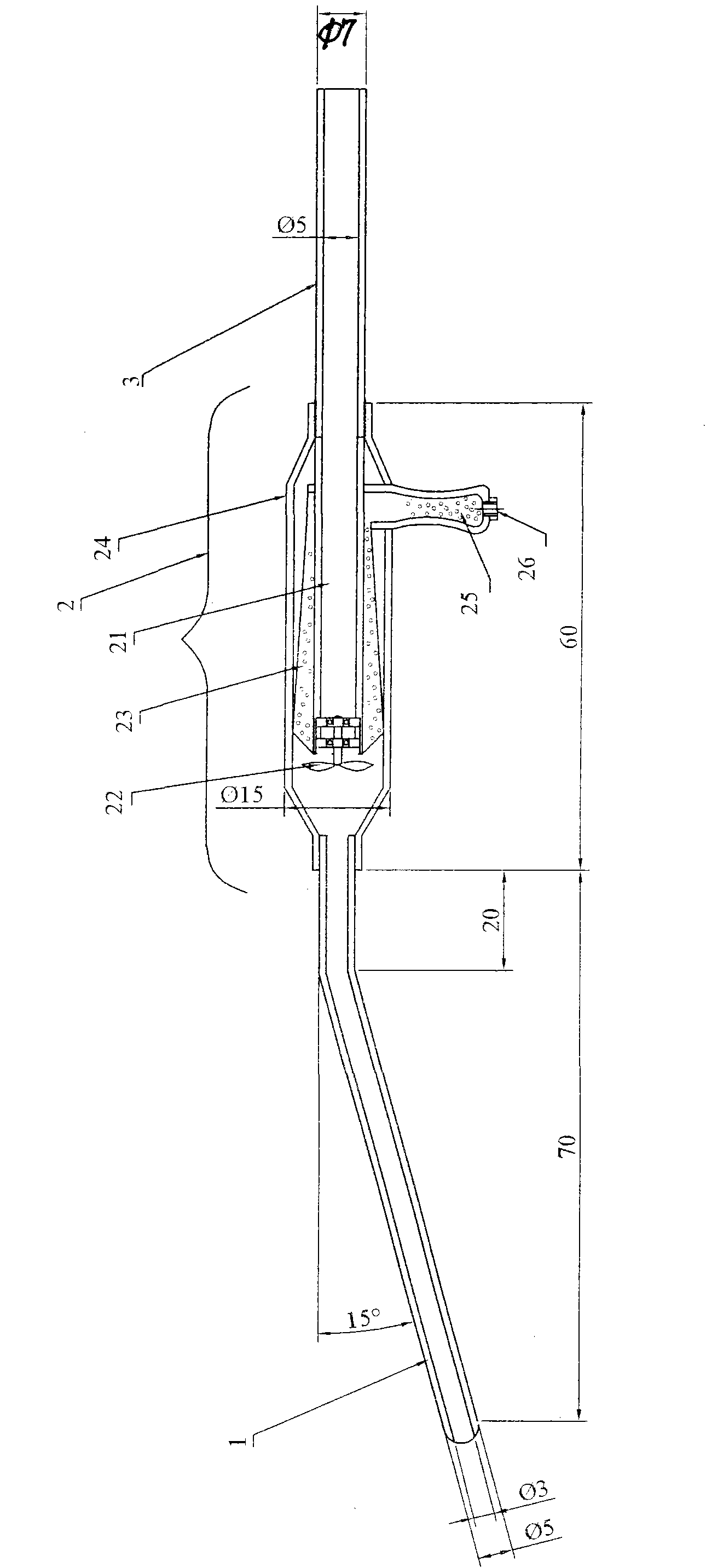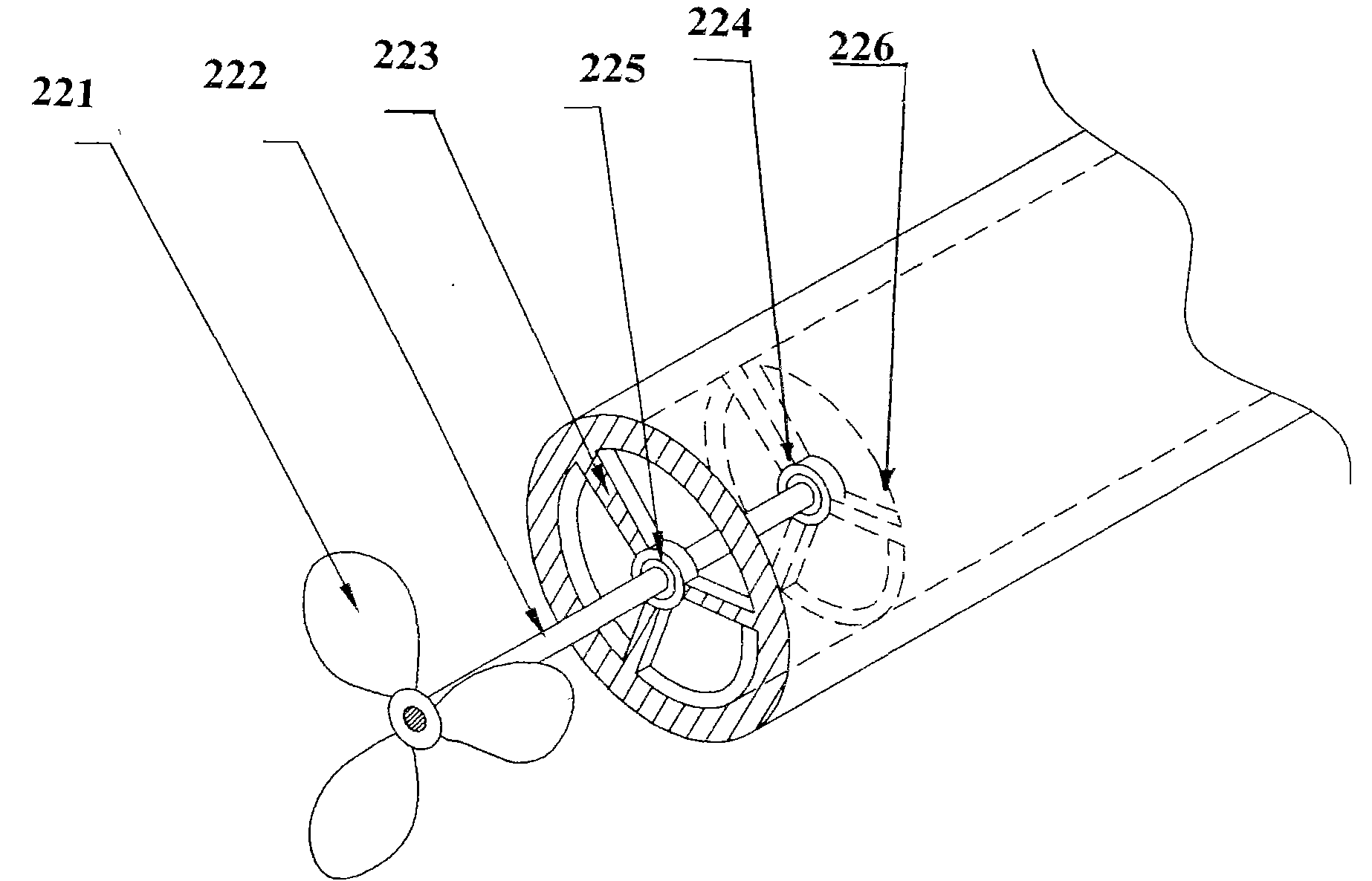Aspirator capable of collecting autogenous bone particle
An aspirator and autologous bone technology, applied in the field of medical devices, can solve the problems of limited bone source, blockage of the aspirator, loss of fine particles and powdered autologous bone powder, etc., to reduce economic burden, reduce patient trauma, and improve quality. Effect
- Summary
- Abstract
- Description
- Claims
- Application Information
AI Technical Summary
Problems solved by technology
Method used
Image
Examples
Embodiment 1
[0015] All parts of the suction device are made of high temperature and high pressure resistant stainless steel, which is convenient for disinfection.
[0016] like figure 1 As shown, the typical size is: the front end of the suction head 1 is placed in the oral cavity, the inner diameter of the suction head 1 is 3.0mm, the outer diameter is 5.0mm, and the total length is 70.0mm; the rear end of the suction head 1 has a 15-degree angle Bend, the distance between the bend and the microfilter is 20.0mm; the outer diameter of the negative pressure connecting pipe 3 is 7.0mm, and the inner diameter is 5.0mm; the length of the outer tube 24 of the microfilter 2 is 60mm, and the outer diameter of the outer tube is 15.0mm, The internal diameter of the inner tube is 5.0 mm. The blades of the impeller are 3 pieces, which are also made of stainless steel, and the outer diameter of the blades is 8.0mm.
PUM
 Login to View More
Login to View More Abstract
Description
Claims
Application Information
 Login to View More
Login to View More - R&D
- Intellectual Property
- Life Sciences
- Materials
- Tech Scout
- Unparalleled Data Quality
- Higher Quality Content
- 60% Fewer Hallucinations
Browse by: Latest US Patents, China's latest patents, Technical Efficacy Thesaurus, Application Domain, Technology Topic, Popular Technical Reports.
© 2025 PatSnap. All rights reserved.Legal|Privacy policy|Modern Slavery Act Transparency Statement|Sitemap|About US| Contact US: help@patsnap.com



